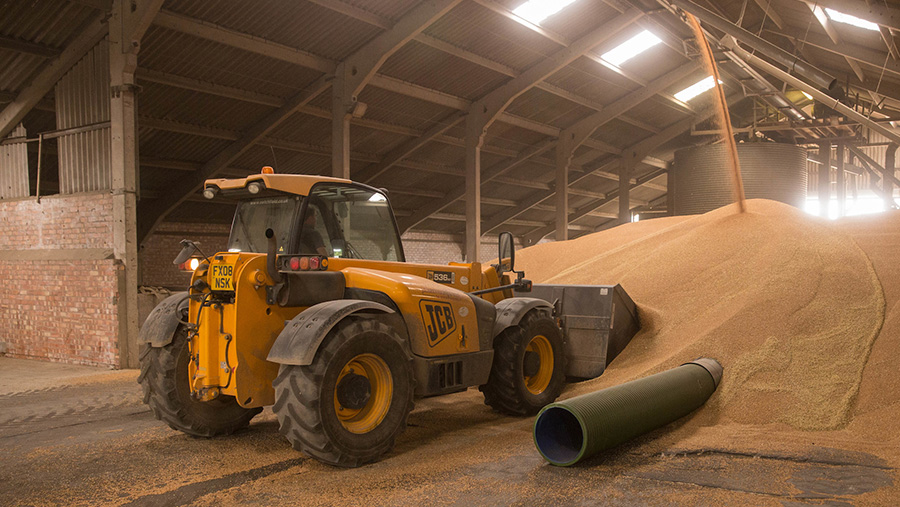Sterling’s three-year low against euro pushes grain prices up
 © Tim Scrivener
© Tim Scrivener Sterling’s continued fall put another £3/t on feed wheat prices and £9/t on oilseed rape in the week to Friday (7 October).
Mid-morning saw London’s November feed wheat futures at £128.05/t while ex-farm prices averaged £123/t for October and £124/t for November.
Milling wheat premium slipped a few pence to average £11.28/t for full-spec breadmaking samples.
For regional grain prices see: Business – prices and trends
Sterling’s fall to a three-year low against the euro on Friday was not the only factor behind the rise to an average spot price of £322/t ex-farm for oilseed rape.
Firmer crude oil markets were also supportive of oilseed rape prices, despite downward pressure from excellent soya bean yields in the US.
Closer to home dry weather in France continued to cause concern over winter rapeseed plantings, while there were growing reports of more desperately dry oilseed rape crops in eastern England too.
Wheat prices were also supported by rain and snow potentially downgrading the quality of the Canadian wheat crop, with 10-20% of this still to cut.
A huge reduction in Morocco’s 2016-17 forecast grain output also helped the firm tone, as this could mean more export opportunity for the UK.
Morocco’s wheat crop is estimated at just 2.7m tonnes compared with 8m tonnes last season and its barley at 0.6m tonnes compared with a 2015-16 crop of 3.5m tonnes.
Defra’s first 2016 UK wheat crop estimate was released this week, 14.5m tonnes, a 12% drop.
This is broadly in line with trade estimates and compares with the five-year average of 14.7m tonnes.
Barley production was put at 6.65m tonnes compared to 7.37m tonnes in 2015 and close to the five-year average of 6.7m tonnes.
